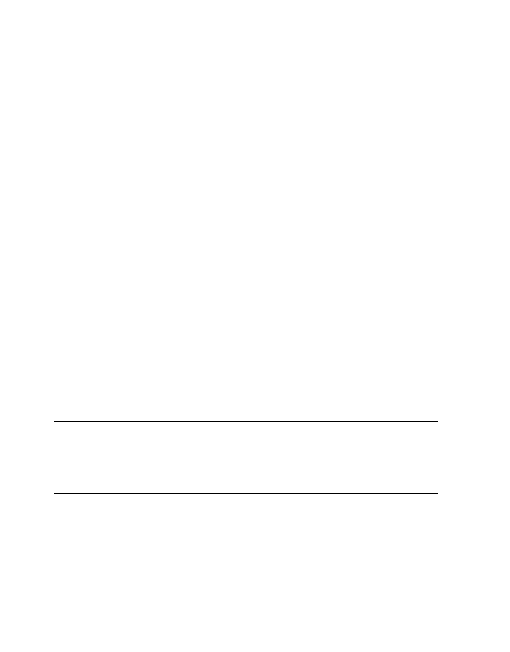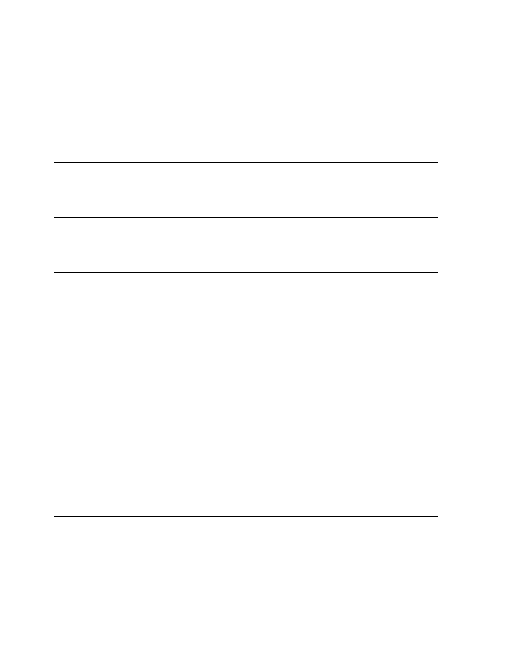HI SKY MINISKY5100 Mobile Phone User Manual Mobile Phone
HI-SKY INTERNATIONAL S.A.S Mobile Phone Mobile Phone
HI SKY >
user manual

Mobile Phone
Model Name: MINISKY 5100
Brand Name: HI-SKY
FCC ID: 2AAIWMINISKY5100

2
CONTENT
1.WARNINGS ....................................................................... - 1 -
2.GETTING STARTED ........................................................ - 2 -
3.YOUR PHONE .................................................................. - 3 -
4.FUNCTION MENU ........................................................... - 4 -
1. PHONEBOOK .................................................................. - 4 -
2.MESSAGE .......................................................................... - 4 -
3.MULTIMEDIA................................................................... - 5 -
4. CALL CENTER ................................................................ - 6 -
5. TOOLS............................................................................... - 6 -
6. PROFILES ........................................................................ - 7 -
7. SETTINGS ........................................................................ - 7 -
8. FILE MANAGER ............................................................. - 8 -
9. APPLICATION ................................................................. - 8 -
10.ENTRY MODE ................................................................ - 8 -
11. CARE AND MAINTENANCE ....................................... - 8 -
12. TECHNICAL INFORMATION ................................... - 10 -

- 1 -
1.Warnings
Not following these simple guidelines may be dangerous or
illegal. Read the complete user guide for further information.
TURN ON SAFELY
Do not turn on the phone when wireless phone is prohibited or
when it may cause interference or danger.
ROAD SAFETY
Obey all road safety laws. Always use both of your hands to
operate the vehicle while driving.
INTERFERENCE
All wireless phones may be sensitive to interference, which
may affect performance.
TURN OFF IN HOSPITALS
Follow all restrictions. Turn off the phone near medical
equipment.
TURN OFF ON AIRCRAFTS
Follow all restrictions. Wireless devices can cause interference
on aircrafts.
TURN OFF WHEN REFUELING
Do not use the phone at/near refueling stations. Do not use
near fuel or chemicals.
USE SENSIBLY
Only qualified personnel may install or repair this product.
ENHANCEMENTS AND BATTERIES
Use only appropriate enhancements and batteries. Do not
connect incompatible products.
WATER-RESISTANCE
Your phone is not water-resistant. Keep it dry.
BACKUP COPIES
Remember to make back-up copies or keep a written record of
all important information stored in your phone.

- 2 -
CONNECTING TO OTHER DEVICES
When connecting to any external device, read its user guide
for detailed safety instructions. Do not connect with
incompatible products.
2.Getting Started
2.1 SIM Card Installation
When you subscribe to a cellular network, you will receive a
plug-in SIM card complete with your subscription details,
such as your PIN, and available optional services.
Caution: Do not bend or scratch your SIM card. Avoid
exposing your SIM card to static electricity, water, or dirt.
Tips:Face the gold color contact point of SIM card towards
the cell phone and push the SIM card into the slot.
2.2 Battery Installation
Caution: Install according to the illustration above to avoid
breaking the battery connectors.
2.3 Charging the Battery
Insert the charger; the flash symbol on the charger plug must
face upwards.
Connect the charger to a standard wall outlet and the battery
power icon in the up-right corner of the screen will start
scrolling. When the battery bar stops scrolling, the battery
charge is complete. Press the two sides of the charger plug and
disconnect the charger from the phone.
2.4 T-flash Card
Insert the T-Flash card into phone. This will expand the Flash
memory of the phone. Tap Multimedia menu, you can browse
MP3, MP4, picture, etc.
2.5 USB Cable
You can transfer and store files, such as MP3, MP4 and

- 3 -
pictures from PC, through USB cable, to the U-disk in phone
or identified SD card that is inserted.
3.Your Phone
3.1 Making a Call
In standby mode, press numerical keys to input phone number
to dial phone number. When you finish inputting phone
number, press the dial key、 SIM2 key to make a call. If you're
making a long distance call, add the area code preceding the
telephone number. During a call, you can press up/down keys
to adjust volume. Press left soft key to access Options.
3.2 Emergency Service
You can dial an emergency call without the SIM card. Contact
your service provider to get the emergency call number.
3.3 Answering a Call
When you receive a call, the phone will ring or vibrate and
will display an incoming call indicator. Press the dial key,
SIM2 key or left soft key to answer. Press left soft key to
access options.
3.4 Rejecting/Ending a Call
Press end key to reject an incoming call or end current call.
3.5 Key function
1.Direction key, In editing interface:
(1) Right key: Move the cursor with the direction of right.
(2) Left key: Move the cursor with the direction of left.
(3) Up key: Move the cursor with the direction of up.
(4)Down key: Move the cursor with the direction of

- 4 -
down.
2. OK key: To the main menu
3. Right soft key: To perform the function of the prompt
displayed in lower right corner of the screen.
4. Left soft key: Enter main menu or to perform the function
of the prompt displayed in lower left corner of the screen.
Click the left soft key then * lock the phone
5. Send key: To dial and pickup calls; on standby mode, to see
the record of all calls made.
6. End key: To end a call or reject incoming calls. Under most
circumstances pressing this key will put the mobile phone into
standby mode. Hold down this key to power On/Off.
7.Number keys: To enter numbers and letters; the number keys
from 2-9 can be set for one-key dialling.
8. * key: cycle according to * keys to switch and input *, +, P,
W, display symbols list in edit mode;
9. # key: long press # key scene mode switch
4.Function menu
1. Phonebook
You can store contacts' personal information and numbers
while also search for previously stored contacts. Press left soft
key to access Options.
2.Message
After entering Messages, in: Templates, Voice Mail Server,
Broadcast Message, SMS Settings, and Message capacity.
2.1 Write Message
2.1.1 Text message
This function can begin a new SMS. After completing the

- 5 -
SMS, press left soft key to access to options.
2.2 Inbox
To check received messages in inbox.
2.3 Outbox
Checks the information of unsuccessfully sent message in
outbox .
2.4 Drafts
You can save unsent and edit incomplete messages in drafts
box.
2.5 Sentbox
Check the sent messages in sent box.
2..6 Templates
5 a template for choice
2.7 Voice mail server
Edit speech number
2.8 Broadcast meessage
To set parameters of Broadcast message
2.9 Settings
SMS and Broadcast message
3.Multimedia
3.1 Camera
Press left soft key or OK key to select the function. The photo
can be previewed in the screen; press OK key to shoot and
right soft key to back, left soft key to access Options. Use
navigation keys, you can choose and enter the functions list on
screen.
3.2 Image browser

- 6 -
Enter the “Image viewer” submenu.
3.3 Audio player
This function menu is used to store and play the multimedia
file. Press the left soft key or OK key to enter and use the
Navigation keys, OK key, or Music Control Keys to operate.
Press up key and down key to adjust volume. Press left soft
key to access Options.
3.4 Video Player
Preview the videos. Press up key and down key to adjust
volume. Press navigation keys to select and then press OK key
confirm to enter. Press left soft key to access to "List", then
press right soft key to return.
3.5 FM Radio
Enter FM radio (insert earphone). Press left/right key to
change frequency, Press the left soft key to access Options.
3.6 Recorder
You can take a recorder in this function. In the play mode, use
up key and down key to adjust the volume. Press OK button to
record. After record, access Options. After entering the file list,
select one file, access to Options
4. Call Center
In the call history menu, you can check dialed calls, received
calls, missed calls, rejected calls, delete all, call timers, call
cost, and GPRS counter.
5. Tools
5.1 Bluetooth
This mobile phone support Bluetooth wireless connection. You
can establish wireless connection between mobile phone and
device to realize voice communication, data exchange and
synchronization. Press left soft key to do options
5.2 Alarm

- 7 -
The alarm clock feature sounds an alert or makes a vibration
alert at a time you specify. There are 3 alarm clocks can be
edit and set.
5.3 Calendar
You can use this feature to view the year, date and solar term
easily. Use navigation keys to navigate other date. Press left
soft key, you can enter to submenu to do options.
5.4 Calculator
This feature can use your phone as a calcularot for simple
claculations. Press corresponding keys to enter the numbers.
5.5 STK
If your SIM card supports STK function, the phone can
display different first level menu according to different STK
card. This function needs the network provider support. If user
finds STK function can't operate normally, please contact the
network provider. If the network provider does not support
this function, we do not claim any responsibility whatsoever.
6. Profiles
This phone provides several profiles, by pressing left soft key,
you can enter to set: Active, Customize, Rename, and Enhance
Sound.
7. Settings
7.1Call Ssettings
Dual-SIM,Network selection;Call divert; Call barred;Call
waiting;Hide ID;Selet line;Filght mode; Others
7.2 Phone settings
Time&date; Select language; Shortcut settings;Auto power
on/off;Power management
7.3 Display
Wallpaper Setting, Idle display settings; Contrast; Backlight;
Keypad backlight time; Animation effect ;

- 8 -
7.4 Security settings
PIN; PIN2; Privacy;Auto keypad lock; Lock screen byend-key;
Power-on password.
7.5 Restore original
Input default password 1234 to restore factory settings
8. File manager
Enter this menu; you can check the files store on T-flash card.
Press left soft key, you can do options.
9. Application
Your phone supplies built-in game, you can play it whenever
or wherever you want.
10.Entry mode
You can use several methods for entering text and numbers.
By selecting a Text Entry Mode, the phone provides a few
Text Entry Mode for new adding, editing contact records,
finding contacts, editing SMS and writing memos.
Select Text Entry Mode:
10.1 Letter entry mode
Editing interface, click on the appropriate soft keyboard
subtitles.
10.2 Number entry mode
Click the top left corner of the input image to switch to digital
input, through the point of the soft keyboard to enter the
corresponding number.
11. Care and maintenance
Battery care
• Your device is powered by a rechargeable battery. When the
power is weak, please charge the battery. In order to extend
the lifespan of the battery, use all the battery's power before

- 9 -
recharging.
• Unplug the charger from the electrical plug and the device
when not in use. Do not leave the battery connected to a
charger more than a week. Overcharging may shorten its
lifespan.
• Extreme temperatures can affect the ability of your battery to
charge. Battery needs the fit temperature. If the surrounding
temperature is over 40°C, the battery cannot be charged.
• Use the battery only for its intended purpose. Never use any
charger or battery that is damaged.
Do not short-circuit the battery. Accidental short-circuiting can
occur when a metallic object such as a coin, clip, or pen
causes direct connection of the positive (+) and negative (-)
terminals of the battery. (These look like metal strips on the
battery.) Short-circuiting the terminals may damage the battery
or the connecting object.
• Leaving the battery in hot or cold places, such as in a closed
car in summer or a freezer in winter conditions, will reduce
the capacity and lifetime of the battery. Always try to keep the
battery between 59°F and 77°F (15°C and 25°C). A hot or cold
battery may not function temporarily, even when the battery is
fully charged.
• Battery performance is particularly limited in temperatures
below freezing.
• Do not dispose of batteries in a fire! Dispose of batteries
according to local regulations. Please recycle when possible.
Cellphones are not considered household waste.
Mobile phone maintenance
• Keep the device dry. Precipitation, humidity, and all types of
liquids or moisture can contain minerals that will corrode
electronic circuits. If your device does get wet, remove the

- 10 -
battery and allow the device to dry completely before
replacing it.
• Do not use or store the device in dusty, dirty areas. Its
moving parts and electronic components can be damaged.
• Do not store the device in hot areas. High temperatures can
shorten the life of electronic devices, damage batteries, and
warp or melt certain plastics.
• Do not store the device in cold areas. When the device
returns to its normal temperature, moisture can form inside the
device and damage electronic circuit boards.
• Do not attempt to open the device other than as instructed in
this guide.
• Do not drop, knock, or shake the device. Rough handling can
break internal circuit boards and fine mechanics.
• Do not use harsh chemicals, cleaning solvents, or strong
detergents to clean the device.
• Do not paint the device Paint can clog the moving parts and
prevent proper operation.
• Use only the supplied or an approved replacement antenna.
Unauthorized antennas, modifications, or attachments could
damage the device and may violate regulations governing
radio devices.
All of the above suggestions apply to your device, battery,
charger, or any enhancement. If any device is not working
properly, take it to the nearest authorized service facility for
service.
12. Technical Information
Weight
Size Length ×Width ×Depth
Battery

- 11 -
Networks:
Battery work times refer to the list below (Will not announce if
the capacity is changed):
The operation time of the battery depends on conditions such as:
• Transmitting power level
• Signal (distance between the phone and the base station)
• Network parameters defined by the operator
• Phone use (WAP, games, SMS)
• Charging procedure used
Exclusions:
Subject to the exclusions contained below:
1. Damage due to the improper use.
2. User does not follow the manual.
Explanation:
The company has the final right of the explanation for this
document.
Software upgrades will not be announced.
All pictures are for reference only in the instruction book;
please refer to the actual phone.
Important Regulatory Information
FCC RF EXPOSURE INFORMATION:
WARNING!! Read this information before using
your phone

- 12 -
In August 1986 the Federal Communications Commission
(FCC) of the United States with its action in Report
and Outer FCC 96-326 adopted an updated safety
standard for human exposure to radio frequency (RF)
electromagnetic energy emitted by FCC regulated
transmitters. Those guidelines are consistent with
the safety standard previously set by both U.S. and
international standards bodies. The design of this
phone complies with the FCC guidelines and these
international standards. Use only the supplied or an
approved antenna. Unauthorized antennas
modifications, or attachments could impair call
quality, damage the phone, or result in violation of
FCC regulations. Do not use the phone with a damaged
antenna. If a damaged antenna comes into contact with
the skin, a minor burn may result. Please contact your
local dealer for replacement antenna.

- 13 -
BODY-WORN OPERATION:
This device was tested for typical body-worn
operations with the back of the phone kept 0.5cm from
the body. To comply with FCC RF exposure requirements,
a minimum separation distance of 0.5cm must be
maintained between the user's body and the back of the
phone, including the antenna, whether extended or
retracted. Third-party belt-clips, holsters and
similar accessories containing metallic components
shall not be used. Body-worn accessories
that cannot maintain 0.5cm separation distance
between the user’s body and the back of the phone,
and have not been tested for typical body-worn
operations may not comply with FCC RF exposure limits
and should be avoided.
For more information about RF exposure, please visit

- 14 -
the FCC website at www.fcc.gov
Your wireless handheld portable telephone is a low
power radio transmitter and receiver. When it is ON,
it receives and also sends out radio frequency (RF)
signals. In August, 1996, the Federal Communications
Commissions (FCC) adopted RF exposure guidelines with
safety levels for hand-held wireless phones. Those
guidelines are consistent with the safety standards
previously set by both U.S. and international
standards bodies:
<ANSIC95.1> (1992) / <NCRP Report 86> (1986) /
<ICIMIRP> (1996)
Those standards were based on comprehensive and
periodic evaluations of the relevant scientific

- 15 -
literature. For example, over 120 scientists,
engineers, and physicians from universities,
government health agencies, and industry reviewed the
available body of research to develop the ANSI
Standard (C95.1). Nevertheless, we recommend that you
use a hands-free kit with your phone (such as an
earpiece or headset) to avoid potential exposure to
RF energy. The design of your phone complies with the
FCC guidelines (and those standards).
Use only the supplied or an approved replacement
antenna. Unauthorized antennas, modifications, or
attachments could damage the phone and may violate FCC
regulations.
NORMAL POSITION:
Hold the phone as you would any other telephone with

- 16 -
the antenna pointed up and over your shoulder.
TIPS ON EFFICIENT OPERATION:
For your phone to operate most efficiently:
• Extend your antenna fully.
• Do not touch the antenna unnecessarily when the phone
is in use. Contact with the antenna affects call quality
and may cause the phone to operate at a higher power level
than otherwise needed.
RF
Exposure Information:
FCC RF Exposure requirements: The highest SAR
value reported under this standard during product
certification for use next to the body with the
minimum separation distance of 0.5cm is 0.290
W
/
kg
;

- 17 -
next to the head is 0.507
W/kg.
This transmitter
must not be collocated or operating in conjunction
with any other antenna or transmitter.
This device complies with part 15 of the FCC rules.
Operation is subject to the following two
conditions:
(1) this device may not cause harmful interference, and
(2) this device must accept any interference
received, including interference that may cause
undesired operation.
NOTE: The manufacturer is not responsible for any
radio or TV interference caused by unauthorized

- 18 -
modifications to this equipment. Such
modifications could void the user’s authority to
operate the equipment.
NOTE: This equipment has been tested and found to
comply with the limits for a Class B digital device,
pursuant to part 15 of the FCC Rules. These limits are
designed to provide reasonable protection against
harmful interference in a residential installation.
This equipment generates uses and can radiate radio
frequency energy and, if not installed and used in
accordance with the instructions, may cause harmful
interference to radio communications. However, there
is no guarantee that interference will not occur in
a particular installation. If this equipment does

- 19 -
cause harmful interference to radio or television
reception, which can be determined by turning the
equipment off and on, the user is encouraged to try
to correct the interference by one or more of the
following measures:
- Reorient or relocate the receiving antenna.
- Increase the separation between the equipment and
receiver.
-Connect the equipment into an outlet on a circuit
different from that to which the receiver is
connected.
-Consult the dealer or an experienced radio/TV
technician for help

- 20 -
Do not use the device with the environment which
below minimum -10℃ or over maximum 50℃ ,the
device may not work.
Changes or modifications to this unit not expressly
approved by the party responsible for compliance
could void the user’s authority to operate the
equipment.